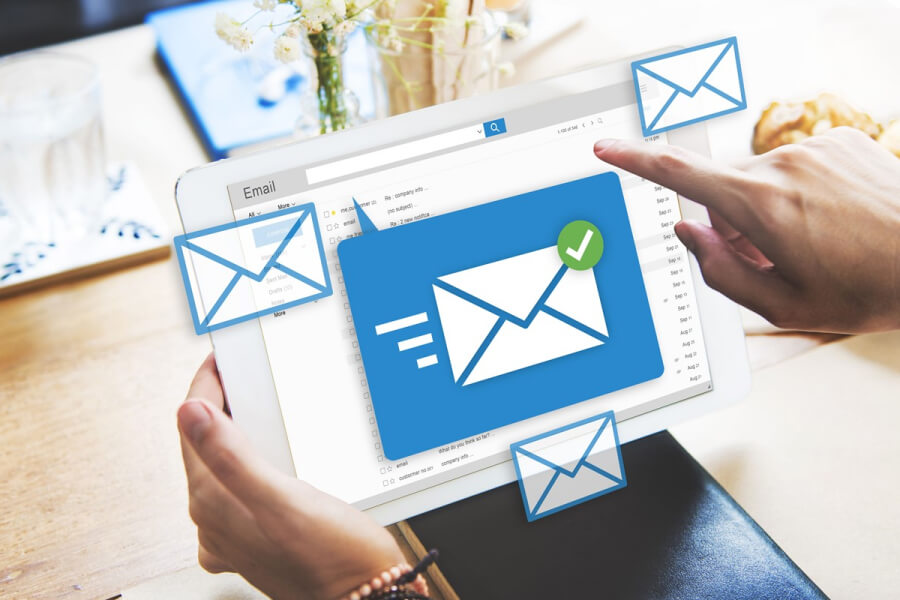No matter which digital marketing agency you choose to do your online marketing, almost all of them would suggest email marketing as one of the most important parts of brand awareness and brand marketing campaigns. But, is it really worth spending money on such a thing which people may read or may ignore completely? Let’s dig a little to have a clear understanding.
According to Statista, a German company that deals in the market and consumer data, the global average number of email users was 4 billion in 2020, which is expected to reach 4.6 billion by the end of 2025. Now that’s a huge number for any marketing agency to ignore when it comes to planning a solid email marketing strategy for their clients.
Even if we ignore the above statistics, designing email campaigns for marketing purposes has other perks attached to it. And the most important perk is that it has a call to action. Any email we get in our inbox, either gets opened or deleted, or we click on the call to action. So, there is no escape and as a result, the brand gets awareness and engagement in any way possible.
Types of Email Marketing
Email marketing is a powerful tool businesses use to reach out to their customers, promote their brand, and drive sales. However, there is no one-size-fits-all approach to email marketing, and different businesses have different needs and objectives. Therefore, it’s essential to understand the different types of email marketing strategies and choose the one that works best for your business.
In this guide, we will go through the four main types of email marketing: newsletter, promotional, triggered, and lifecycle.
- Newsletter Emails:
A newsletter email is a regular communication sent to subscribers, usually on a weekly or monthly basis.
The content of the newsletter can vary, but it typically includes information about the company’s latest products or services, industry news, and helpful email marketing tips or advice.
The main goal of a newsletter is to keep subscribers engaged with the brand, build a relationship, and increase brand loyalty.
- Promotional Emails:
Promotional emails are sent to subscribers with the purpose of promoting a specific product, service, or sale. These emails are usually more sales-oriented than newsletters and often include special offers, discounts, or coupons.
The goal of a promotional email is to drive sales and encourage customers to take action, such as making a purchase.
- Triggered Emails:
Triggered emails are sent to subscribers based on a specific action or behaviour, such as signing up for a newsletter, abandoning a cart, or making a purchase.
These emails are highly targeted and personalised and can be very effective at driving engagement and sales. The goal of a triggered email is to encourage the subscriber to take a specific action, such as completing a purchase or returning to the website
- Lifecycle Emails:
Lifecycle emails are sent to subscribers based on where they are in the customer journey. These emails are designed to nurture the customer relationship and guide the subscriber through the sales funnel.
The email marketing content will depend on the customer’s stage in the journey and can include welcome emails, re-engagement emails, and post-purchase follow-up emails. The goal of a lifecycle email is to build a long-term relationship with the customer and increase their lifetime value.
Benefits of Email Marketing
Email marketing is a powerful and cost-effective way for businesses to reach and engage with their target audience. In this answer, I will explain some of the email marketing best practices for businesses:
- Increased Brand Awareness:
Email marketing allows businesses to stay in touch with their customers and subscribers on a regular basis. This consistent communication helps to build brand awareness and keep the brand top-of-mind. When customers receive regular emails from a brand, they are more likely to remember the brand and consider it when they need products or services.
- Cost-Effective:
Email marketing is a cost-effective way for businesses to reach their target audience. Unlike traditional advertising, which can be expensive, email marketing can be done with a small budget. Businesses can send email campaigns to thousands of subscribers at once, without incurring significant costs.
- Targeted Audience:
Email marketing allows businesses to target their audience with highly personalized and relevant content. Businesses can segment their email list based on various factors, such as interests, demographics, and behaviours, and send targeted emails to each segment. This helps to ensure that each subscriber receives content that is relevant and interesting to them.
- Increased Sales:
Email marketing is a proven way to increase sales. When done effectively, email campaigns can encourage subscribers to make a purchase or take another desired action, such as signing up for a free trial or attending an event. Businesses can use email marketing to promote new products, offer special discounts or promotions, and provide helpful email marketing content that can help to drive sales.
- Measurable Results:
Email marketing provides measurable results that businesses can use to evaluate the success of their campaigns. With email marketing, businesses can track open rates, click-through rates, conversion rates, and other key metrics. This data can be used to optimize future campaigns and improve overall performance.
- Increased Customer Loyalty:
Email marketing can help to build customer loyalty by providing subscribers with valuable content, personalized recommendations, and exclusive offers. By nurturing the customer relationship through email marketing, businesses can encourage repeat purchases and turn customers into loyal brand advocates.
Email marketing is a powerful tool for businesses that can provide a range of benefits, including increased brand awareness, cost-effectiveness, targeted audience, increased sales, measurable results, and increased customer loyalty. By developing an effective email marketing strategy, businesses can leverage these benefits to reach their goals and grow their business.
Effective Email Marketing Strategies
So, after analysing the above factors, we got sure about the potential that a strong email marketing campaign has, but we still have the question as to how to strengthen the campaign so that maximum results could be attained. Let’s have a look at effective email marketing campaign strategies:
It is Important to be Clear About Your Campaign Vision
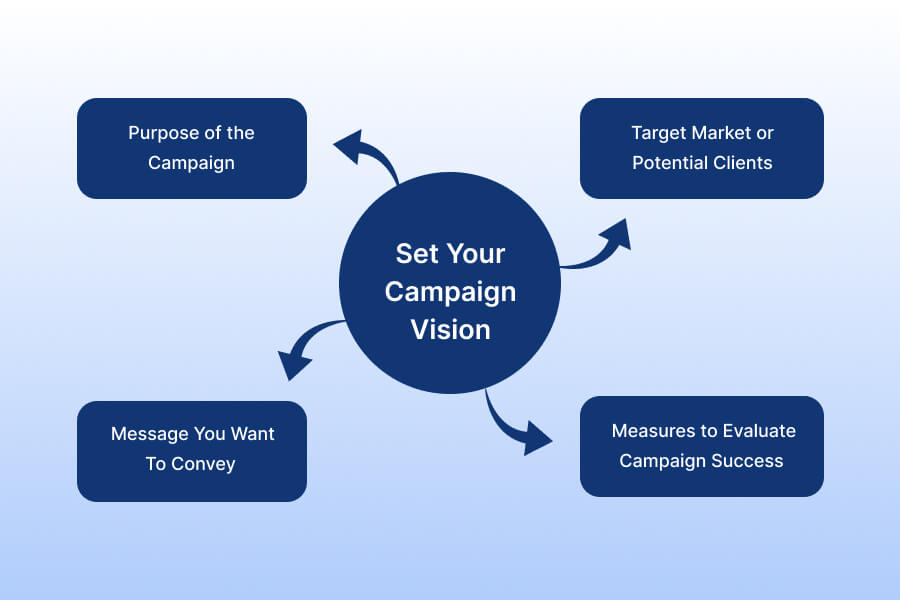
Before setting any email marketing campaign goals, do seek the answers to the following questions:
- The purpose for launching the campaign and what outcomes you are expecting to have?
- Who is your target market or potential clients?
- What message do you want to convey to your audience?
- What are the measures that will determine the success of your campaign?
Once you get the answers to all the above questions, it’s time to get into action. In 2023, it is no more about segmentation and personalization only, there are more strings attached to it. So, let’s have a quick glimpse of all the factors that count for a successful email marketing campaign:
Incentivize Users to Build a Trustworthy Email List
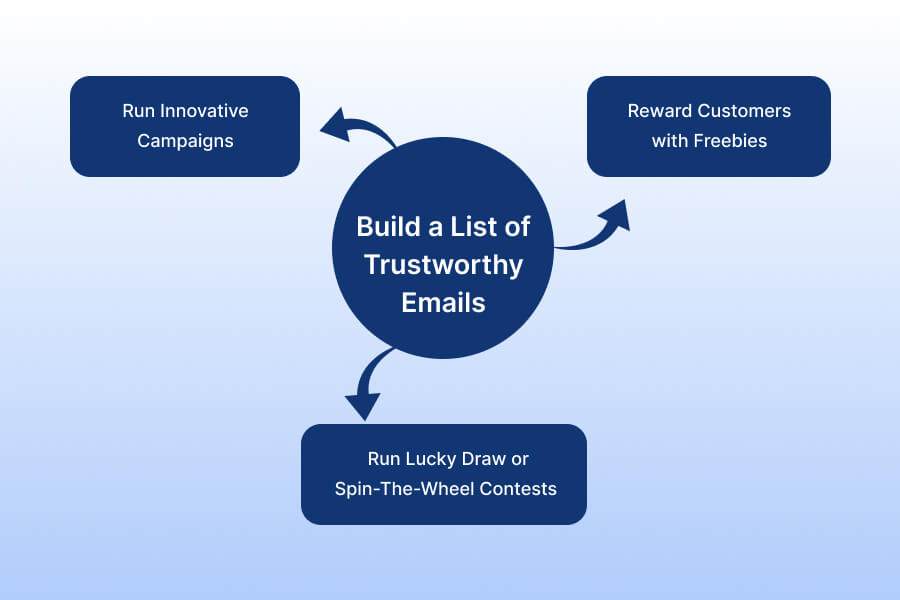
It is the foremost important factor to have an emailer list who is willing to get your emails. Thus, buying a list is not at all advisable. It can do more harm to your campaign than good. Sending emails without consent not only harms the brand reputation but lowers the open rate, which in turn harms the IP reputation. However, you can play a trick here to get genuine email ids. Running innovative campaigns, sharing gift vouchers, or gamifying the process with a lucky draw or spin-the-wheel can help you get authentic email ids from the users.
Check Your Emailer List After Regular Interval
To keep your IP reputation safe, verify and review your email list every 8 to 10 months. Many unskilled email marketers send emails to whosoever in their list in order to get more conversion. But often turns out to be the worst way to get more eyeballs, instead, it does risk your IP reputation. Thus, to keep the email open rates high, send emails to only those who have a high chance to open the mail or would really be interested in your product/service.
Make The Emails Interesting to Read – Keep It Simple & Contextual
On average, a person gets around 100 to 120 emails in a day. So, you can now imagine the chances of your email skipping the eyesight of your viewer. To ensure your user opens the email you send them, try to make the emails contextual and make it relevant to your user.
For example, if a person bought books related to art from a store, they are more likely to open or respond to an email related to artistic stuff like paints, brushes, canvases, etc. than automotive products. If you are confused about how to make contextualization possible, you can hire an expert email marketing service provider who has the tools and techniques to segment and categorize the users based on their purchase history, demographics, sales funnel, email engagement, etc.
Personalize the Content – People Love to Get Treated Special
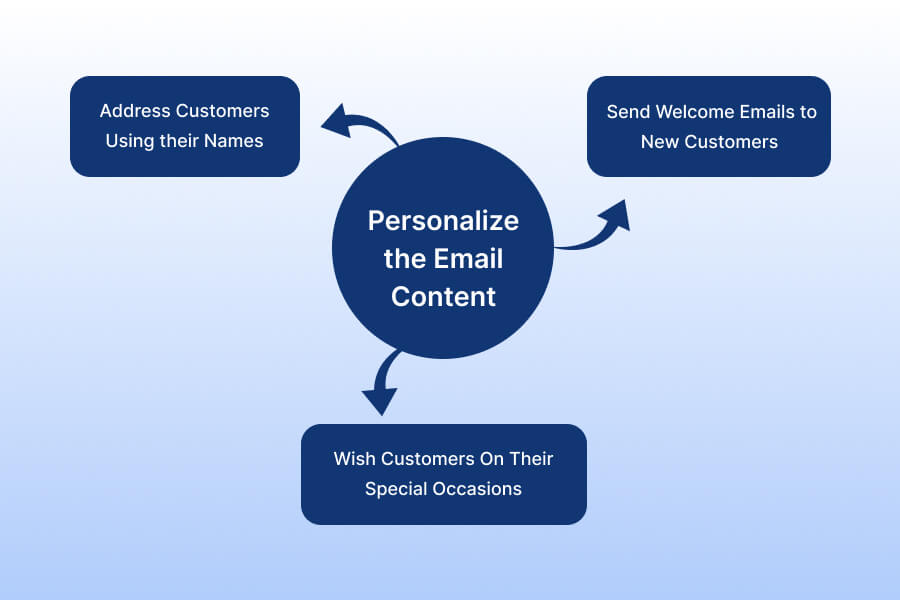
Market experts often stress on personalizing the content when you send emails and there is a good reason for this. By personalizing the content, you can better connect and engage with your customers and nurture relationships with them, which in the long run helps boost conversion rate and sales. To personalize the content here are some best email marketing strategies:
- Always address the customer using their names
- Send them emails that are relevant to them. For example, send welcome or introductory emails to the new customers, and upsell offers to previous ones.
- Never miss a chance to make the customers feel special. Send them seasonal greetings or wish them on their birthdays and anniversaries.
Make the Subject Line Short Yet Catchy
This tiny content piece can either trigger the customer to open the mail or divert the email to their trash folder. According to Invesp, 47% of recipients open the mail because of the subject line, and at the same time, 69% of the recipients report the email as spam if they find the subject line fishy. It is always recommended to use 6 to 10 words in the email subject line. Emails with subject lines that show urgency, offers, curiosity, personalization, etc. are more likely to have higher open rates.
Omnichannel Marketing Can Do Wonders
A strong email marketing campaign strategy is always multi-faceted, that evaluates different aspects of marketing. In today’s digitally driven world, the thin line of difference between physical and digital is getting blurry, creating more room for businesses to be creative. Let’s understand this omnichannel marketing with an example.
When you create geo-targeted email campaigns, you can actually target your customers through multiple channels. For example, if you want to promote a shop in a particular city, you can target your emails accordingly, so that when any of the customers from your email list walks past that shop, they will get an email notification about the shop’s offers.
Alongside, you can send the customer a push notification and an SMS with a discount code that can be used in that shop. So, an email marketing campaign can be synched with multiple other channels like push, in-app, SMS, social media, and the like to target the customer from all sides. However, you always need to keep in mind that every communication channel is different and so the messaging should also be done according to the nature of the channel.
Keep An Eye on Email Deliverability
To make sure a high rate of email deliverability, always send emails to relevant groups or those who are more likely to open the emails. This is also important so that the mailing algorithm doesn’t consider your emails as spam. Also, content & creativity impact the email deliverability rate.
If people don’t find your emails interesting to read or take any action, they are more likely to send it to trash folder, which again impacts the future deliverability of your emails. If you are unsure of your content, you can always take the help of the best content marketing service provider.
Make the Email Marketing Campaign Mobile Friendly
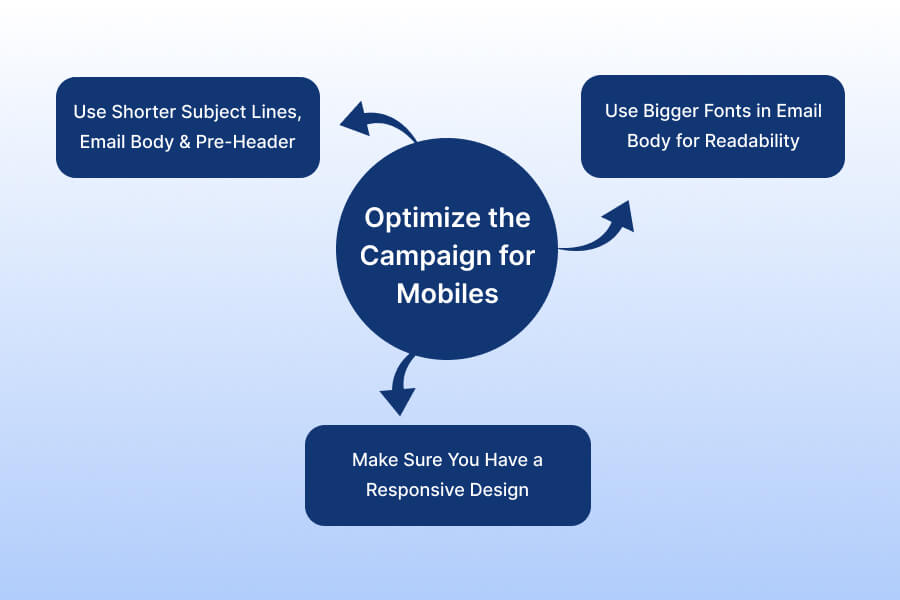
According to Bluecore’s 2021 report, 59% of millennials and 67% of Gen Z users access their inboxes on their smartphones. Now you can understand how important it becomes to optimize the campaign for mobile devices too. To optimize your email campaigns for mobile devices:
- Make sure your subject line, email body and pre-header content are concise and the email body content fonts are big enough so that users can read the message clearly on small devices.
- Always make sure to have a responsive design so that the design doesn’t look bad.
- Design the content in such a way so that users can have an easy-to-tap call-to-action button.
Never Lose a Track of Your Campaign
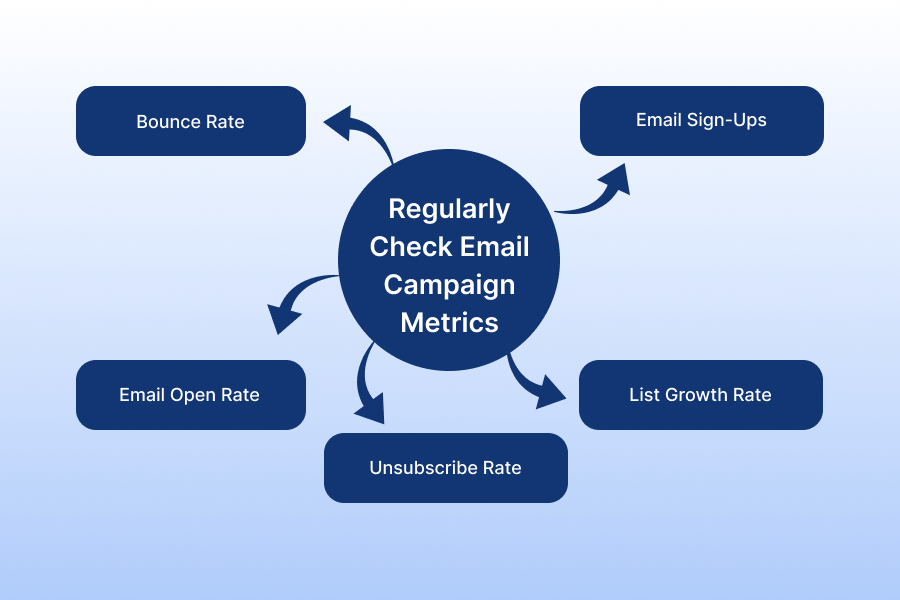
Tracking the email campaign metrics is as important as designing the campaign. This helps you understand how your campaign is performing and the areas you need to work on. The email campaign metrics can be monitored in the following way:
- Check for the bounce rate of your email. Factors like emailer list, email content, technical glitch etc. can cause a high bounce rate.
- Track the email open rates by checking the number of opened emails. This will help you assess your campaign reach and compare the performance metrics of emails sent to different user segments.
- Check for the unsubscribe rate of your email. This helps to assess the response rate of the emails and also to identify the effectiveness of your content.
- Keep a track of the email sign-ups in order to understand the success rate of your campaign to pull the crowd to your landing page.
- Another most important factor is the list growth rate. If this rate is low, you need to refine your communication & lead generation strategies to improve the conversion rate.
A Strong CTA is a Key to Catch Eyeballs
CTA or Call-To-Action is one of the most important aspects of any email. A button-based CTA is more effective as compared to link-based CTAs. To optimize CTA, use a click-worthy copy focusing on the benefits for the customers, avoid any such word that increases friction, use button design (as suggested earlier), wisely use the whitespace and never forget to test your CTA in the email.
Find Out the Best Time to Send Emails
Time is probably the most precious resource when it comes to sending your business emails to your customers. An awesome email sent at the wrong time is a great example of a bad email campaign execution. Just imagine, you are sending an important piece of communication to your customer at a time when they are asleep. It will do no good to your business. Thus, choose the best time to send the emails in order to increase the open and click-through rate.
All said and done. If you are still confused about email marketing best practices for 2023 to plan an awesome email marketing campaign, here’s a roundup for you:
- Make sure to seek answers of these 4 questions – a) What is the purpose of the campaign? b) Who are the potential clients or target market? c) What message you want to convey? d) What are the defining measures of your success?
- Never buy an email list. Instead, build your own list of trustworthy and interested users by running small innovative campaigns.
- Clean your email list at regular intervals in order to send emails to only potential clients and to safeguard your IP Reputation.
- Keep the email copy simple and contextual.
- Personalize the email content in order to hit hard the customers.
- Keep the subject line short, catchy, and clutter-free.
- Make use of omnichannel marketing to get the attention of the customers.
- Make sure to get a high deliverability rate by sending emails to only those who would be interested in your product/service and are more likely to open the email.
- Use responsive design to make the emails mobile-friendly.
- Keep a track of your campaign metrics on a regular basis in order to minimize bounce rate, assess the campaign reach, understand the response rate, calculate the click-through rate, and understand whether any improvement is required or not.
- Use a click-worthy CTA button.
- Research and find out the best time to send emails to your potential customers.
Engaging the services of an Email Marketing Agency
Engaging the services of an Email Marketing Agency
If you are looking to engage the services of an email marketing agency to handle your email marketing campaigns, there are several factors to consider. Here’s a guideline to help you choose the right email marketing agency for your business:
- Determine Your Needs: Assess your requirements and goals for email marketing. Consider factors such as campaign strategy, list segmentation, email design, automation, reporting, and integration with other marketing channels. Understanding your needs will help you find an agency that aligns with your objectives.
- Research and Shortlist: Conduct thorough research to identify reputable email marketing agencies. Look for agencies with a proven track record, positive client testimonials, and a portfolio of successful campaigns. Seek recommendations from colleagues, industry peers, or online marketing communities.
- Expertise and Services: Evaluate the expertise and range of services offered by each agency. Check if they have experience in your industry or niche. Consider whether they offer end-to-end campaign management, including email marketing strategy development, list management, content creation, design, automation setup, testing, and reporting.
- Industry Compliance: Ensure the agency adheres to email marketing regulations and best practices. Email campaigns must comply with laws like the CAN-SPAM Act (in the US) or the General Data Protection Regulation (GDPR) (in the EU). Confirm that the agency follows ethical practices and provides options for subscribers to opt out or manage their preferences.
- Email Deliverability: Inquire about the agency’s approach to achieving high deliverability rates. A reputable agency should have strategies in place to minimize spam filters, maintain a clean email list, and implement authentication protocols like DKIM and SPF.
- Reporting and Analytics: Check the agency’s reporting capabilities and the level of data they provide. Robust reporting should include metrics such as open rates, click-through rates, conversions, subscriber engagement, and other key performance indicators (KPIs). Ask about their methods for tracking and analyzing campaign results.
- Client Support and Communication: Assess the agency’s communication channels and client support. Determine their responsiveness, availability, and the level of ongoing support they offer. Clear and open communication is crucial for a successful agency-client relationship.
- Pricing Structure: Understand the agency’s pricing model and ensure it aligns with your budget. Some agencies may charge a flat fee, while others may work on a project basis or charge based on the volume of emails sent. Compare pricing structures among shortlisted agencies and evaluate the value they offer for the cost.
- Client References: Request references or case studies from the agency’s past or current clients. Reach out to these references to gather insights on their experience with the agency, the results achieved, and their overall satisfaction.
- Contract Terms: Review the agency’s contract terms and ensure they are fair, transparent, and flexible. Pay attention to any termination clauses, confidentiality agreements, and data ownership rights.
By carefully evaluating these factors, you can select an email marketing agency that meets your specific requirements and has the expertise to execute successful campaigns on your behalf.
Latest Trends
Email marketing is a highly effective way for businesses to reach their audience and drive conversions. In recent years, several trends have emerged in email marketing that businesses should be aware of.
- Interactive Emails:
Interactive emails involve adding interactive elements to an email, such as quizzes, polls, and GIFs. Interactive emails can help to improve engagement and provide a more immersive experience. For example, clothing retailer H&M created an interactive email campaign that allowed customers to choose their favourite outfits and then provided personalized recommendations based on their choices.
- Automated Emails:
Automated emails are triggered by specific actions, such as a customer making a purchase or abandoning a cart. Automated emails can help to improve customer engagement and drive conversions. For example, online retailer Amazon sends automated emails to customers who have abandoned their carts, reminding them of the items they left behind and offering personalized recommendations.
- Personalization:
Personalization involves tailoring content to the individual customer, such as using their name in the subject line or recommending products based on their browsing history. Personalized emails can help to improve customer engagement and drive conversions. For example, Spotify uses customer data to send personalized emails that recommend new music based on the customer’s listening habits.
- Mobile Optimization:
With more and more people accessing emails on mobile devices, it’s important for businesses to optimize their emails for mobile. This involves using a responsive design and making sure that the email is easy to read and navigate on a small screen. For example, Dunkin’ Donuts created a mobile-optimized email campaign that allowed customers to order their favourite drinks and snacks directly from the email.
- User-Generated Content (UGC):
UGC involves featuring content created by customers, such as reviews or social media posts, in email campaigns. UGC can help to build trust and authenticity with customers and improve engagement. For example, fitness company Peloton features user-generated photos and quotes in their email campaigns, showcasing their community of dedicated customers.
In conclusion, email marketing is a constantly evolving field, and businesses need to stay up-to-date with the latest trends in order to stay ahead of the competition. By leveraging these email marketing trends, businesses can improve customer engagement, drive conversions, and build stronger relationships with their audience.
Essential Tools for Email Marketing
Effective email marketing tools are essential for businesses to create, execute, and track successful email campaigns. In this answer, I’ll explain some of the top email marketing tools available and how they can be used to improve email marketing efforts.
- Mailchimp:
Mailchimp is a popular email marketing tool that allows businesses to create and send email campaigns, automate emails, and track campaign performance.
It offers a range of customizable templates and design tools, as well as advanced features such as A/B testing and audience segmentation. Mailchimp also integrates with other marketing tools, such as social media platforms and e-commerce platforms.
- Constant Contact:
Constant Contact is another email marketing tool that offers a range of customizable templates and design tools. Constant Contact also offers advanced features such as A/B testing, list segmentation, and automation.
It also provides real-time tracking and reporting, so businesses can track the success of their campaigns.
- HubSpot:
HubSpot is a comprehensive marketing tool that offers email marketing as one of its features.
It offers a range of templates and design tools, as well as advanced features such as personalization, segmentation, and automation.
It also integrates with other marketing tools, such as social media and CRM platforms.
- ConvertKit:
ConvertKit is an email marketing tool that is designed specifically for bloggers and creators.
It offers features such as automation, tagging, and segmentation, as well as customizable forms and landing pages. ConvertKit also provides detailed analytics and reporting, so businesses can track the success of their campaigns.
- Campaign Monitor:
Campaign Monitor is an email marketing tool that offers a range of templates and design tools, as well as advanced features such as automation, personalization, and segmentation.
It also provides real-time tracking and reporting, as well as integrations with other marketing tools.
- AWeber:
AWeber is an email marketing tool that offers a range of customizable templates and design tools, as well as advanced features such as automation, tagging, and segmentation.
It also provides detailed analytics and reporting, as well as integrations with other marketing tools.
By leveraging these tools, businesses can improve the effectiveness of their email marketing efforts, drive conversions, and build stronger relationships with their audience.
When choosing an email marketing tool, it’s important to consider factors such as customization options, advanced features, integrations, and analytics and reporting.
